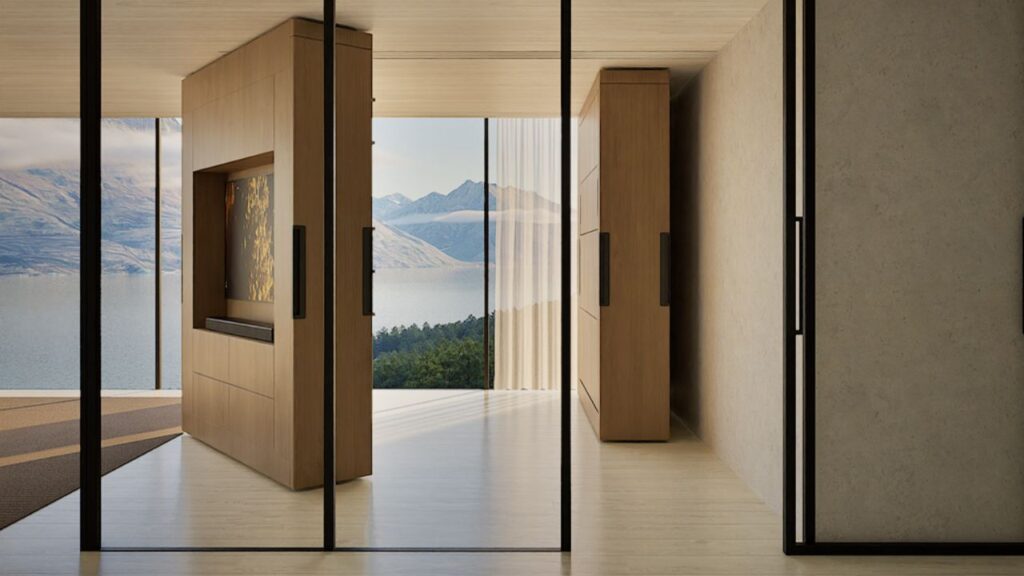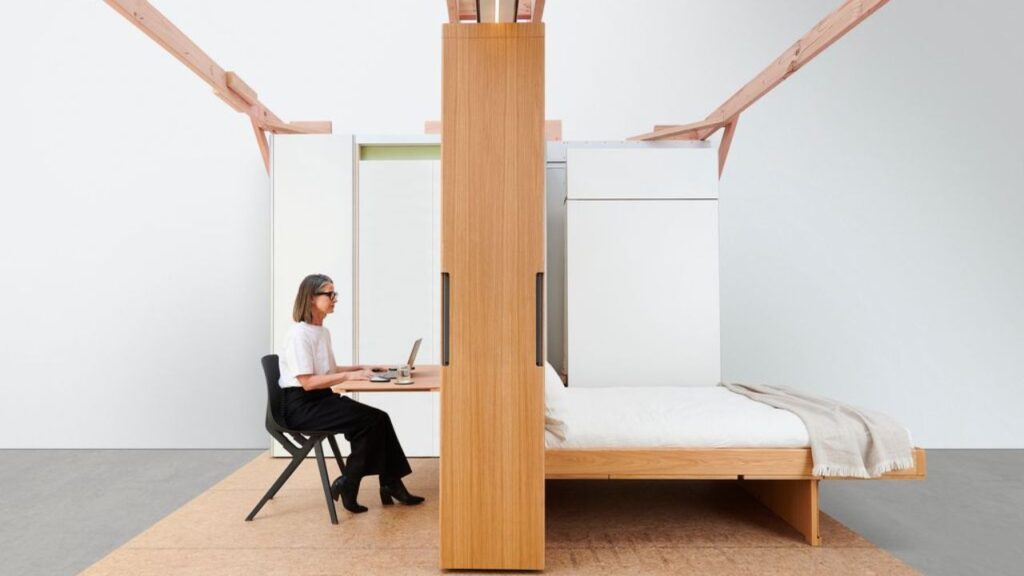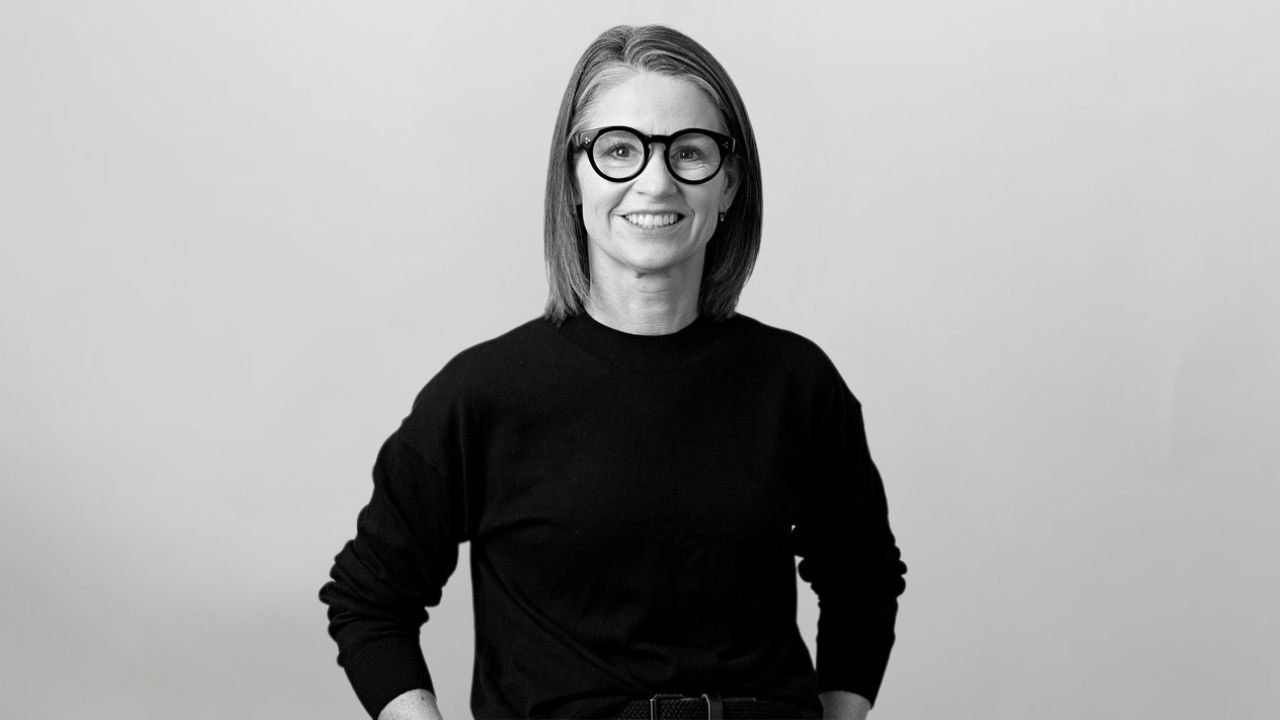As population growth outpaces housing supply, global institutions such as the UN and the World Bank have all issued a common warning: the way we think about housing must change.
Urban sprawl, static architecture and reliance on ever-larger floorplans are no longer sustainable, both environmentally and economically.
But what if buildings weren’t static? What if space could adapt, not just once, but continuously, to the changing needs of the people who live in it?
That’s the idea behind unió, a spatial living system designed to deliver a better experience for both residents and developers, in less space.
Founded by Rachel Oakley, unió challenges conventional architecture with a patented, rail-based pivot mechanism that transforms interior spaces in real time.

At its core, the system replaces fixed rooms with mobile, multi-function modules, or ‘spatial cassettes,’ that can rotate, extend, and reconfigure based on user needs.
The result: a footprint that adapts throughout the day and over the years.
Rachel, who previously worked in management and tech consulting, was inspired by the flexible layout of her family’s coastal cruising yacht.
“On a boat, space is never wasted. One area has to serve multiple functions. But in our homes, rooms often sit unused for most of the week,” she says.

“I wanted to build something that could shift with life’s demands, from work, to sleep, to social, and evolve as people’s lives do.”
What unió offers developers
For developers, the unió system can translate directly into higher yields without compromising livability.
By enabling a more efficient spatial configuration, it’s possible to increase the number of units per development while retaining functionality, privacy, and amenity.
One Auckland-based developer currently evaluating unió’s technology was able to reimagine the floorplan of a traditional three-bedroom townhouse.
Where purchasers previously demanded a fourth bedroom, often at the expense of the downstairs living area, unió enabled the same space to flex between multiple uses: office, bedroom, rumpus or secondary lounge, depending on the buyer.
“It’s about compressing the footprint without compromising experience,” Rachel explains.
“For around $25,000, we can deliver the function of a four-bedroom, without pushing buyers into the next price bracket of $250,000 more. That’s a significant value unlock.”
Additional benefits for developers include:
- Higher pre-sale interest due to differentiated, customisable design
- Reduced build costs and emissions via efficient use of materials
- Future-proofed flexibility for build-to-rent and multi-use applications
A comparative planning model for a medium-rise apartment block demonstrated the system’s commercial advantage.
Using unió, the developer could reconfigure the same building envelope to deliver 130 units instead of 82; a significant boost in potential ROI, while still offering a better occupant experience.
“We’re not asking developers to build more floors or add complexity,” she says.
“We’re helping them increase functional space within the same footprint. That means faster feasibility, better ROI and, crucially, no compromise to the lived experience.”
She adds that the system is also budget-flexible: “The modules can be specified to align with different finishes and price points. So we can work in affordable housing, but we’re also having conversations with developers building $5.5 million apartments.”
Early reaction from developers, agents and consumers has been consistently positive.
“The feedback has been incredible,” she says. “Everyone gets the problem we’re solving: the mismatch between what people can afford and what they need. And everyone’s excited by a solution that doesn’t feel like a compromise.”
What it means for agents
For agents, the selling points are equally compelling: the system enables more freedom in fewer square metres. Smaller deposits, smaller mortgages, and smaller monthly expenses – all while retaining flexibility, comfort, and style.
The modules, which range in function from sleep, work and storage to dining and entertainment, can be selected, interchanged and customised at the time of sale.
The rail system is integrated into the ceiling, floor or wall, depending on the project, and does not require electrical power for movement. It’s intuitive, fast to use, and designed for every life stage, from young children to older adults.
“I wanted both my seven-year-old and my 77-year-old mother to be able to move the modules,” Rachel says.
“And they can. That’s a design choice, not just for ease of use, but for reliability and sustainability.”
From an agent’s point of view, the system is also a powerful tool for differentiation and faster off-the-plan sales.
Rachel notes that unió enables new types of sales conversations: “Instead of marketing homes purely on bedroom count or floor area, agents can now sell on functional outcomes. A two-bedroom apartment with unió can do what a traditional three-bedroom can’t.”
Dynamic architecture, delivered
Backed by early-stage funding and currently participating in the REACH program, unió has generated strong interest from developers, architects, and interior designers alike and the company is in discussions with multiple residential projects in New Zealand and Australia.
The system has been designed to meet the needs of both affordable housing and premium developments, and its modular nature allows it to scale up or down in cost and aesthetic to match the target market.
Ultimately, Rachel believes dynamic architecture is more than a design trend; it’s a necessary evolution.
“Architecture shouldn’t just house us. It should respond to us,” she says.
“We’ve built a platform for people to live better – with less.”

